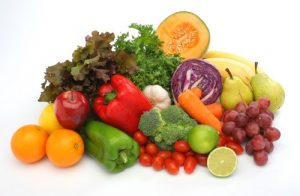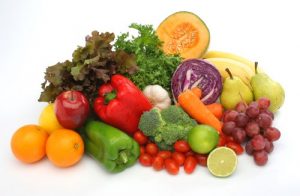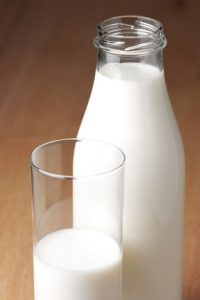Is The Pegan Diet Healthy?
Author: Dr. Stephen Chaney
 Just when you thought you had heard about every possible diet, along comes a new one called the Pegan diet. What is the Pegan Diet and is it healthy?
Just when you thought you had heard about every possible diet, along comes a new one called the Pegan diet. What is the Pegan Diet and is it healthy?
The Pegan diet was introduced by Dr. Mark Hyman in his new book, “Food: What the Heck Should I Eat?”. I don’t agree with Dr. Hyman on everything (which will become apparent when I review his diet), but I hold him in high regard. He is much more credible than most of the doctors who are writing popular blogs and diet books.
Basically, the Pegan diet is a combination of the Paleo and Vegan diets (hence the name). It
was meant to combine the best features of each while eliminating their drawbacks.
What Are The Pros & Cons Of The Vegan And Paleo Diets?
 Pros And Cons Of The Vegan Diet:
Pros And Cons Of The Vegan Diet:
Dr. Hyman listed the following pros:
- The diet ideally incorporates mostly whole, plant-based foods.
- It provides lots of vitamins (especially antioxidants and most of the B vitamins), fiber, and healthy fats (monounsaturated and polyunsaturated fats).
- It avoids what he calls the “baggage that comes from feedlot meat”. He is, of course, referring to the inhumane way that most of the animals that end up on our plates are treated. It also avoids the saturated and trans fats associated with the meats most Americans prefer.
I would add that Vegan diets are very healthy. As I discuss in my book, “Slaying the Food
Myths” (https://slayingthefoodmyths.com). we know that people who consume whole food
Vegan diets over a period of many years weigh less and have lower incidence of heart
disease, diabetes, and cancer than the general population.
Dr. Hyman listed the following cons:
- Vegan diets are likely to be deficient in vitamin B12, iron, zinc, copper, and vitamin D.
Of these deficiencies, B12 is the most serious because B12 only comes from animal
foods. - Vegan diets will not provide enough of the heart healthy omega-3s, EPA and DHA.
Again, that’s because these omega-3 fatty acids come primarily from animal sources. - Vegan diets may not provide enough protein, especially for seniors because they have
increased protein requirements. It is possible to get enough protein from Vegan foods,
but some diligence is required. - The food industry provides plenty of highly processed, junk food versions of “Vegan”
foods. So, it is possible to be Vegan and eat an unhealthy diet.
I would concur and add that calcium is another likely deficiency for Vegans
Pros & Cons Of the Paleo Diet:
 Dr. Hyman listed the following pros:
Dr. Hyman listed the following pros:
- The Paleo diet eliminates most sugars and grains. That eliminates sodas, junk foods, and most processed foods, which is a very good thing.
- It is a low-glycemic diet, which is helpful for people with diabetes. He went on to say that it could reverse type 2 diabetes.
I would concur and add that it has a healthier profile of fats than most low-carb diets.
However, I would also note that a low-carb version of the Mediterranean diet is also helpful for people with diabetes, and a whole food, very low-fat version of the Vegan diet has also been shown to reverse type 2 diabetes.
Dr. Hyman listed the following cons:
- The Paleo diet is essentially a myth. There were many types of diets in prehistoric times.
- Many people following the Paleo diet consume too much meat and too little plant-based foods.
- Our prehistoric ancestors may have consumed as much as 100-150 grams of fiber a day. The average American consumes 8 -15 grams a day, and people on a Paleo diet may consume even less. (Note: The estimate of 100-150 grams of fiber per day is based on the same type of faulty evidence that lead to the Paleo diet in the first place. Our prehistoric ancestor’s fiber intake probably varied tremendously depending on their local food supply. However, it is safe to assume they ate much more fiber than we do.)
I would concur and add:
- Studies have shown that women consuming the Paleo diet have low intakes of calcium, magnesium, iodine, thiamin, riboflavin, and folate.
- The Paleo diet relies heavily on red meat, which an agency of the World Health Organization has classified as a probable carcinogen. Reliance on grass-fed beef in the Paleo diet does not reduce this concern.
- There is no evidence that the Paleo diet is healthy long term. In fact, there is no evidence that any meat-based, low-carb diet is healthy long term.
For more about the pros and cons of the Vegan and Paleo diets – plus which diets I consider healthy – see my book “Slaying The Food Myths.”
What Is The Pegan Diet?
In the words of Dr. Hyman: “…the best versions of both diets [Paleo and Vegan] are built on the same foundation: Eat real, whole food. Vegan and Paleo diets focus on foods that don’t raise our blood sugar, plenty of fresh vegetables and fruits, healthy protein and [healthy] fats, and no crap [junk foods].” Dr. Hyman started with that foundation for the Paleo diet.
Here are Dr. Hyman’s 12 characteristics of his Pegan diet with my comments:
#1. Stay away from sugar. My comment: He gets an A+ for this one because, unlike many of today’s diet gurus, he is not telling you to avoid all sugars. He is focusing on the sugars and refined carbohydrates that cause spikes in blood sugar and insulin levels. As I point out in my book, there is the same amount of sugar in an 8-oz soda and a medium apple. It’s the sodas, refined carbs, and sugary foods you want to avoid, not apples.
 #2: Eat mostly plants. My comment: Again, he gets an A+ for this one. He recommends covering half your plate with a variety of colorful fruits and vegetables.
#2: Eat mostly plants. My comment: Again, he gets an A+ for this one. He recommends covering half your plate with a variety of colorful fruits and vegetables.
#3. Easy on the fruits. My comment: This one is an A-. He is correct in pointing out that some fruits like grapes and melons are higher in sugar and/or lower in fiber than other fruits. He is missing the point that blood sugar response to foods is a very individual characteristic. Some people do well on most fruits. Other people need to be more careful about which fruits they eat.
#4: Stay away from pesticides, antibiotics, hormones, and GMO foods. My comment: Another A+, especially because he included artificial additives, preservatives, dyes, and sweeteners.
#5: Eat foods containing healthy fats. My comment: I give him a B- for this one. He is right on the mark when he talks about polyunsaturated omega-3 fats and the monounsaturated fats found in nuts, seeds, olive oil, and avocados as being healthy. He is a bit off-base when he starts talking about “healthy” saturated fats in grass-fed beef and butter. He also advocates coconut oil despite the fact there is no good long-term evidence coconut oil is healthy.
#6: Stay away from most vegetable, nut, and seed oils. My comment: He gets a C- for this one. These oils are a good source of omega-6 polyunsaturated fats, which are essential for the human body. There is nothing inherently unhealthy about them. However, I do agree with him that we consume way too much of these oils in relation to monounsaturated and omega-3 polyunsaturated oils. If he had said “reduce consumption of” rather than “stay away from” those oils, I would have upgraded him to an A-.
 #7: Avoid or limit dairy. My comment: He gets a B for this one. The statement that dairy “doesn’t work for most people” is a myth. Avoiding or limiting dairy is excellent advice for anyone who is dairy-sensitive. I would also agree that we should not necessarily be aiming for 2 to 3 servings of dairy per day for everyone. However, dairy is a major source of calcium, magnesium, and vitamin D in the American diet. If dairy is to be eliminated or limited, consideration should be given to where people will get those important nutrients.
#7: Avoid or limit dairy. My comment: He gets a B for this one. The statement that dairy “doesn’t work for most people” is a myth. Avoiding or limiting dairy is excellent advice for anyone who is dairy-sensitive. I would also agree that we should not necessarily be aiming for 2 to 3 servings of dairy per day for everyone. However, dairy is a major source of calcium, magnesium, and vitamin D in the American diet. If dairy is to be eliminated or limited, consideration should be given to where people will get those important nutrients.
#8: Think of meat and animal products as condiments – not the main course. My comment: He gets an A+ for this one. As I say in my book, fruits and vegetables can neutralize many of the toxic effects of meats. One or two ounces of meat in a green salad or a stir fry is much healthier than a 6-ounce steak with fries.
#9: Eat sustainably raised or harvested low-mercury fish. My comment: He gets an A- for this one. I downgraded him because he ignored contamination of fish with PCBs and other industrial chemicals. Once you take that into account, most farm-raised and some sustainably harvested fish are eliminated from consideration.
#10. Avoid gluten. My comment: He gets a C- for this one. It is good advice if you are gluten sensitive. If you are not, gluten-containing foods are not generally a problem. The real focus should be on the blood sugar response to the food, not on whether the food contains wheat or another gluten-containing grain.
#11: Eat gluten-free whole grains sparingly. My comment: This one rates a D. Whole grains are a good source of some nutrients like vitamin E. They are also an excellent source of fiber. It is important to realize that there are many types of fiber and each plays a different role in intestinal health. The fibers found in whole grains are different than those found in fruits and vegetables. They are an important part of a healthy diet. Dr. Hyman states that whole grains also raise blood sugar. That is an overstatement. Their effect on blood sugar may not be zero, but it is less than that of refined grains. Moreover, when eaten as part of a healthy meal, their effect on blood sugar is minimal.
#12: Eat beans only once in a while. My comment: He gets a D- for this one. He has already limited meat to a condiment. If you are also only eating beans every once in a while, you will have trouble meeting your protein requirements, especially as you get older.
You will find more details about the science behind many of the comments I made above in my book, “Slaying The Food Myths.”
Is The Pegan Diet Healthy?
The simple answer is that no long-term studies have been done, so we have no evidence that the Pegan diet is either healthy or unhealthy. However, the Pegan diet incorporates many of the best features of the Vegan diet, and we know the Vegan diet is very healthy long term. We also know that a semi-vegetarian diet is almost as healthy as the Vegan diet, so incorporating small amounts of meat into the Pegan diet is unlikely to make it unhealthy. On the basis of those considerations, the Pegan diet would appear to be healthy.
However, we have 5 food groups for a reason. Any time you eliminate food groups you introduce potential nutritional deficiencies that can affect your health. That is why I have concerns about statements like “Stay away from most vegetable, nut, and seed oils”, “Avoid dairy”, “Eat…whole grains sparingly”, and “Eat beans only once in a while”. If you removed those limitations, the Pegan diet would likely be very healthy. However, as it is currently described, the Pegan diet has too many questionable restrictions to be considered as healthy.
The Bottom Line
Dr. Mark Hyman has combined the best features of the Paleo and Vegan diets to create a new diet, which he calls the Pegan diet.
I have analyzed the Pegan diet in great detail in the article above:
- It has many characteristics of a healthy diet.
- However, it also has several unwarranted dietary restrictions that are likely to create nutritional deficiencies which may have adverse health consequences.
- There are no long-term studies to tell us whether the Pegan diet is healthy or unhealthy.
In summary, the diet has some good features and some bad features. Because it has both good and bad features, one cannot predict whether the diet will be healthy or unhealthy long term. Until there is long-term experimental evidence that it is healthy, I cannot recommend it.
For more details, read the article above.
These statements have not been evaluated by the Food and Drug Administration. This information is not intended to diagnose, treat, cure or prevent any disease.
